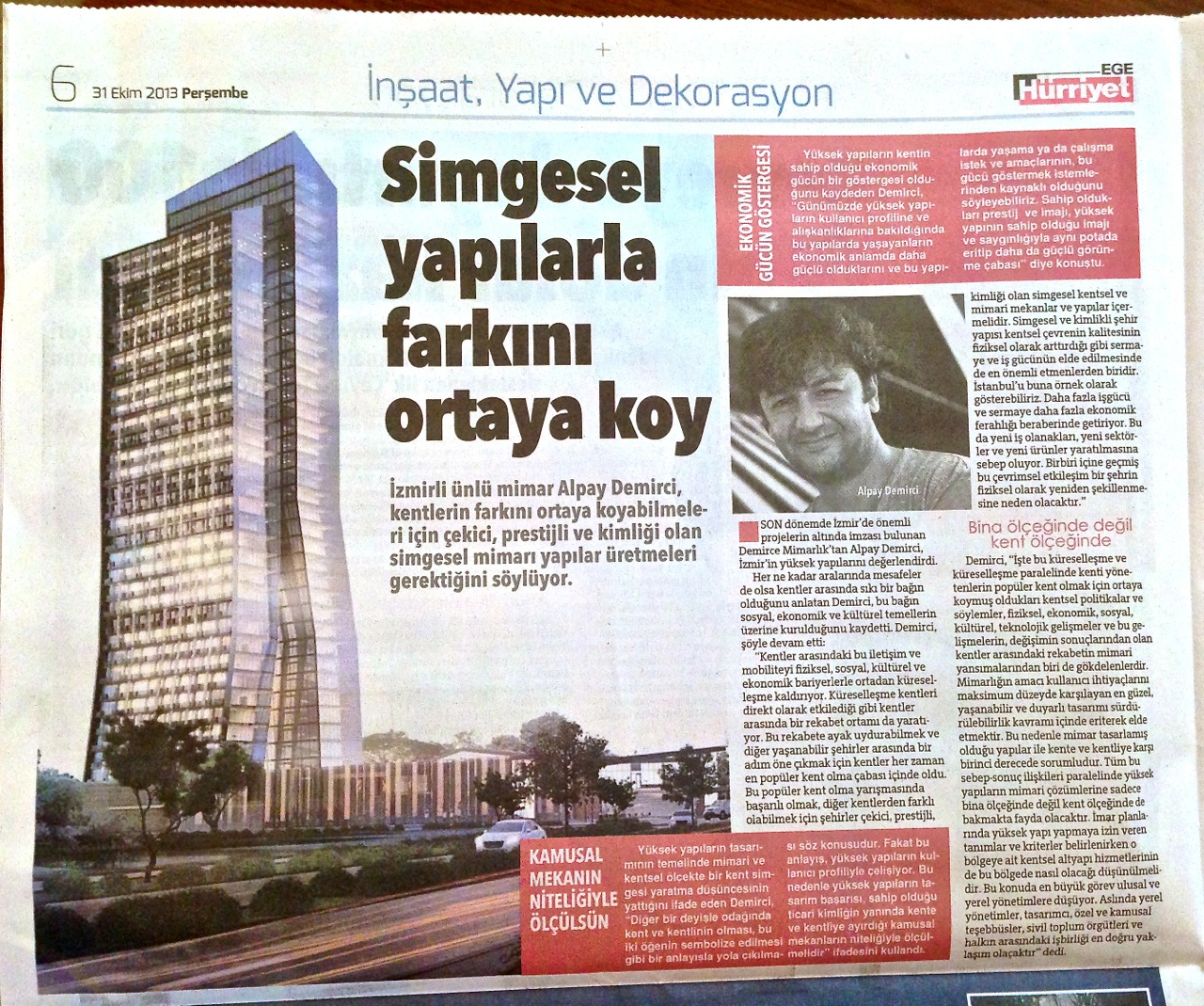Hürriyet, Alpay Demirci Interview

Even though there are distances between them, there is a close bond between cities and this bond is built on social, economic and cultural foundations. This communication and mobility between cities appears under the name of "globalization", which eliminates the physical, social, cultural and economic barriers between cities. While globalization directly affects cities, it also creates a competitive environment between cities. In order to keep up with this competition and to stand out among other livable cities, cities have always strived to be the most popular city.
In order to be successful in this competition to become a popular city and to be different from other cities, cities must contain attractive, prestigious, symbolic urban and architectural spaces and structures with an identity. The symbolic and distinctive city structure not only increases the quality of the urban environment physically, but also is one of the most important factors in obtaining capital and labor force. We can show Istanbul as an example. More labor force and capital brings more economic prosperity. This leads to the creation of new job opportunities, new sectors and new products. This intertwined cyclical interaction will cause the physical reshaping of a city.
In parallel with this globalization and globalization, the urban policies and discourses put forward by the city administrators to become a popular city, physical, economic, social, economic, cultural and technological developments and one of the architectural reflections of the competition between cities, which are the results of these developments and change, are skyscrapers.
The dictionary definition is a building with thirty or more floors and is used in our language as the Turkish equivalent of the English word skyscraper.
The aim of architecture is to obtain the most beautiful, most livable and most sensitive design that meets user needs at the maximum level by fusing it within the concept of sustainability. For this reason, the architect is primarily responsible for the city and its citizens with the buildings he designs. In parallel with all these cause-effect relationships, it would be useful to look at the architectural solutions of high-rise buildings not only at the building scale but also at the city scale. While determining the definitions and criteria that allow the construction of high-rise buildings in zoning plans, it should be considered how the urban infrastructure (transportation, traffic, etc.) services of that region will be in that region. The biggest responsibility in this regard falls to national and local governments. In fact, cooperation between local governments, designers, private and public enterprises, non-governmental organizations and the public would be the best approach.
High-rise buildings are indicators of the economic power of the city. Today, when we look at the user profile and habits of high-rise buildings, we can say that those living in these buildings are economically stronger and their desire and purpose to live or work in these buildings stems from their desire to show this power. The prestige and image they have are in the same pot as the image and prestige of the high-rise building. An attempt to melt away and look even stronger...
It is possible to start with the idea of creating a city symbol on an architectural and urban scale as the basis of the design of high-rise buildings, in other words, focusing on the city and its citizens and symbolizing these two elements. However, this understanding contradicts the user profile of high-rise buildings. For this reason, the success of the design of high-rise buildings should be measured by the quality of the public spaces they allocate to the city and its citizens, as well as its commercial identity.
The architect's responsibility begins at this point. In order to produce a successful project, an interdisciplinary working environment must be created and within this environment, each discipline (architect, engineer, urban planner, real estate consultants, advertising consultants) must combine their knowledge and skills. The architect should be at the forefront with his unifying and integrative identity in this environment.
It would not be wrong to make the following suggestion in order to understand the place that tall buildings have in the minds of the citizens. It may not be possible to name all the tall buildings in a city, but when we hear the name of a single tall building in that city, we will immediately know which city it is.



